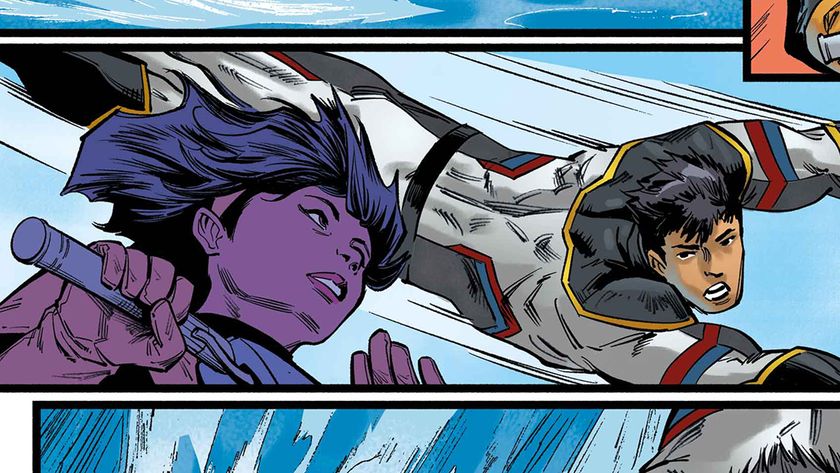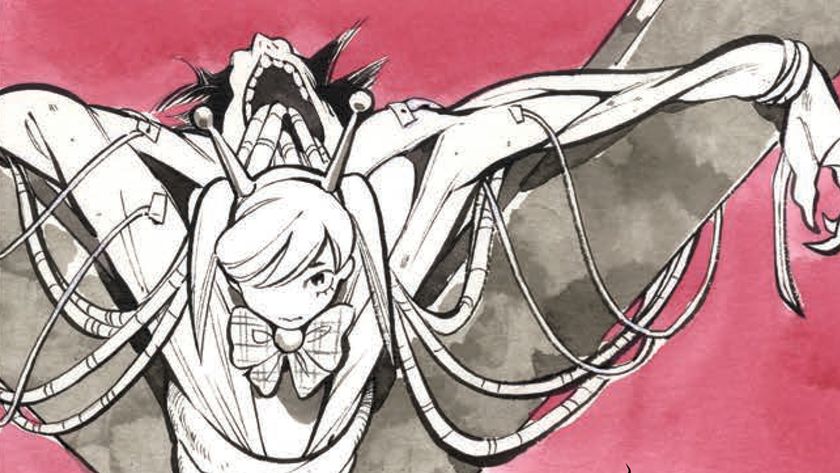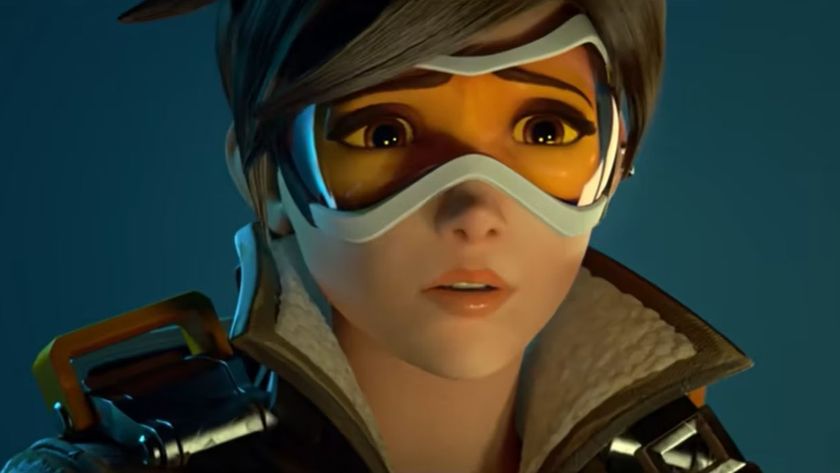She-Hulk: Attorney at Law - Marvel's newest MCU hero explained
She-Hulk - get to know the classic Marvel character before she smashes ... and litigates her way into the MCU
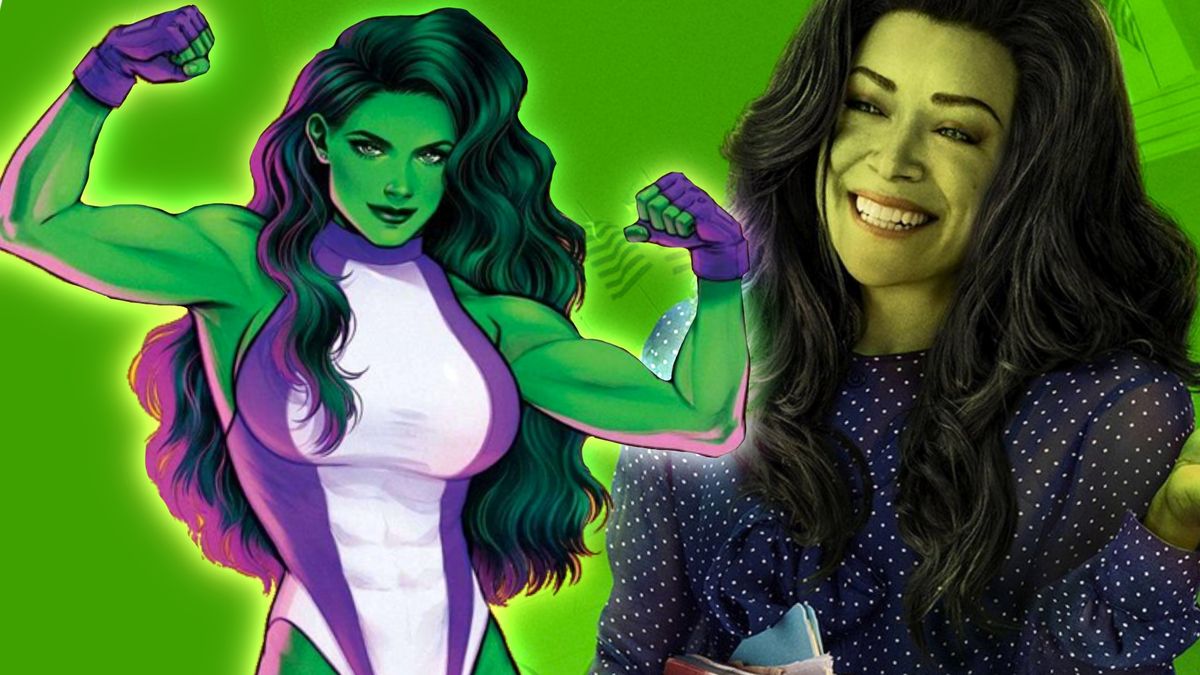
She-Hulk: Attorney at Law Episode 5 is now streaming on Disney Plus, with Jennifer Walters going to court to defend her right to use the name She-Hulk from super-powered influencer Titania, who has attempted to trademark it herself.
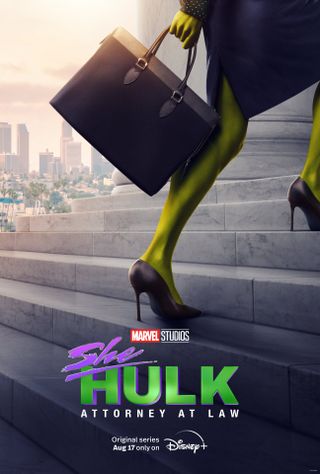
For MCU followers who aren't Marvel comic book readers, the name 'She-Hulk' might sound a little clunky in the ear at first, but the character's long and storied career is anything but. And the semi-tongue-in-cheek, slightly risque tone of the series seems like a strong adaptation of many of the themes that have come to define She-Hulk's place in the Marvel Universe.
While her origins were as a pretty straightforward female knock-off of the original Hulk, her evolution as a character has earned her near-universal regard as one of the greatest female superheroes of all time and one of the best superhero characters of any gender.
As one of Marvel's first gamma-radiated characters to combine the best aspects of her human persona along with the best aspects of her superhuman form, the comic book She-Hulk served as a predecessor and direct inspiration to the 'Professor Hulk' incarnation of Bruce Banner moviegoers were introduced to in 2019's Avengers: Endgame.
But that all said, she is also been known to lose her cool and her head just like her cousin here and there and can go into 'She-Hulk smash!' mode with the appropriate increases in strength and invulnerability during uncontrollable berserker furies.
And also like her cousin, She-Hulk has a long history with the Avengers - Earth's Mightiest Heroes - and just departed from a years-long stint as a member of the team's core roster, although there's also been a few occasions where her rampages have pitted her against the team as they're sometimes forced to (try to) subdue her.
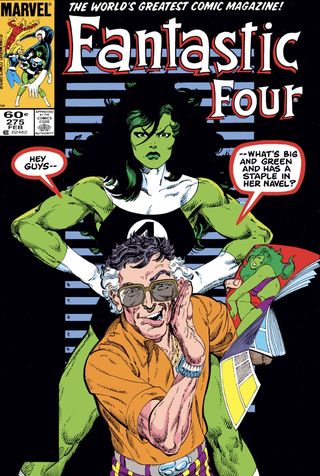
She-Hulk's comic book relationships go well beyond her cousin the Hulk and her friends and teammates in the Avengers though. She's also been a recurring member of the Fantastic Four and has even gotten into multiversal, fourth-wall-breaking comedy through her associations with the Time Variance Authority (who made their own 2021 MCU debut in Loki).
Comic deals, prizes and latest news
Get the best comic news, insights, opinions, analysis and more!
Now that she's part of the MCU, 'Shulkie' (her affectionate occasional nickname) seems well poised to leverage her connections to the Avengers, Fantastic Four, the Time Variance Authority, and more as one of the linchpins of the next wave of live-action Marvel heroes - perhaps even forming the unlikely heart and soul of a new group of Avengers just like her cousin Bruce Banner did for the original team (or maybe even subbing in on the Fantastic Four someday).
She-Hulk's MCU story is just beginning, but her comic book history goes all the way back to 1980, with plenty of twists, turns, and transformations along the way.
Here's all you need to know about She-Hulk now that she's part of the MCU.
Who is She-Hulk?

Jennifer Walters made her Marvel Comics debut in 1980's Savage She-Hulk #1, written by none other than Stan Lee, with art from John Buscema. Lee purportedly created She-Hulk in response to the popularity of the late '70s Hulk television show, which he believed the producers might spin off with a new female version of the Hulk, the way they had with their other hit show The Six Million Dollar Man, which spun-off into The Bionic Woman.
Though he wrote only the first issue of the title, Lee established Jennifer Walter's odd origins as a superhero, in which she receives a blood transfusion from her cousin Bruce Banner after an enemy of her father, a sheriff who was murdered by criminals when she was a child, attempts to assassinate her.
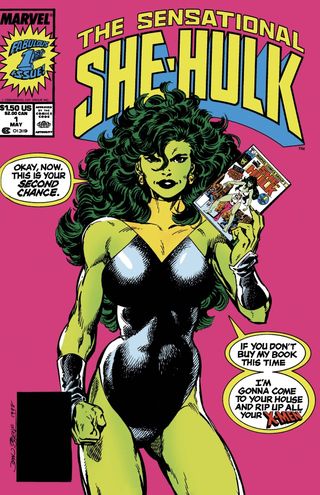
Bruce's Gamma-irradiated blood gives Jennifer the same transformational properties Bruce has as the Hulk. While Jennifer's transformation is initially induced by anger, as with Bruce's change into the Hulk, she gains the ability to control her transformation thanks to help from Morbius, the Living Vampire, who uses his background as a blood scientist to alter her own Gamma-blood.
Deciding to remain as She-Hulk full-time thanks to the strength, confidence, and power she has in her She-Hulk form with no loss of intelligence or awareness, Jennifer goes on to join the Avengers - a decision that leads her to travel to Battleworld to participate in the Beyonder's superhero war games in the Marvel Super Heroes Secret Wars limited series.
She-Hulk's time in Secret Wars has two profound effects on her story. For one thing, she gets her very own arch-enemy in the form of Titania, a villain introduced in the story who has often been billed as the strongest woman in the Marvel Universe. Titania, who was part of the recent Gamma Flight title and who is married to Hulk villain the Absorbing Man, will be played by actor Jameela Jamil in Disney Plus's She-Hulk show - and she's glimpsed briefly in the trailer.
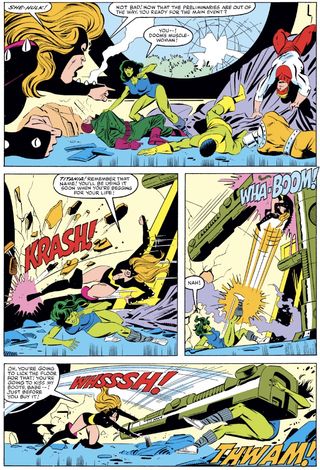
The other major impact Secret Wars has on She-Hulk is that she departs the Avengers, going on to join the Fantastic Four to replace Ben Grimm/the Thing as the team's powerhouse after Grimm is temporarily reverted to his human form during the story. She-Hulk has since become one of the most iconic substitute Fantastic Four members, filling in as a replacement member again in Matt Fraction and Mike Allred's FF title.
But while she's been an off-and-on member of the Avengers over the years, it's her involvement with the Earth's Mightiest Heroes that she's best known for.
There are also two other She-Hulks, just as there are multiple characters who have used the Hulk designator (Jennifer Walters included). Alongside Jenn, there's Lyra, the daughter of Hulk and Thundra (a super-strong warrior queen from another world in the Multiverse). And then there's Betty Ross, Bruce Banner's former paramour, who was once able to transform into a Red She-Hulk, much like her father General Thaddeus 'Thunderbolt' Ross could transform into a Red Hulk.
She-Hulk in the Marvel Universe
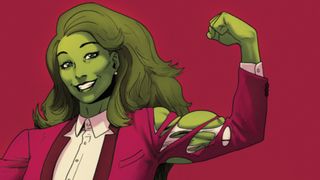
She-Hulk being a spin-off character may imply that she's often picking up the leftovers of her more famous cousin the Hulk. But that couldn't be further from the truth - with She-Hulk's balanced Hulk personality predating Bruce's own incarnation of Professor Hulk, and a history of fourth-wall-breaking meta-comedy that beat Deadpool to the punch by several years.
Many of Shulkie's most off-the-wall connections to the Marvel Universe stem from her career as a practicing attorney; a vocation through which she's offered legal defense to numerous heroes, villains, and even cosmic beings over the years.
She-Hulk's rep as a meta-comedic, self-aware, fourth-wall-breaking hero who always has an eye on the absurdity of her own adventures stems from her second ongoing title, Sensational She-Hulk. Many of the title's issues, and most of Shulkie's appearances with the Fantastic Four, were created by writer/artist John Byrne, who became synonymous with She-Hulk while also adding the sense of humor, zany style, and (especially for the time) surprisingly bold sexuality that continue to inform her portrayal.
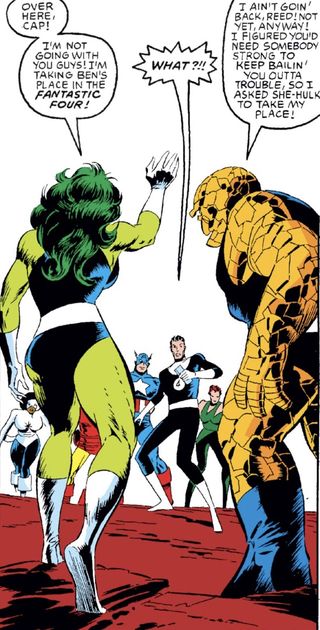
The early '00s She-Hulk title from writer Dan Slott continued Byrne's take on the character, positioning her as one of the Marvel Universe's premier attorneys not just in the core Marvel 616 reality, but across the entire Multiverse. It's in this capacity that She-Hulk finds herself involved with the Time Variance Authority.
She-Hulk's initial involvement with the Time Variance Authority involves a case in which Hawkeye, who was dead at the time in Marvel continuity thanks to the events of 'Avengers: Disassembled,' is brought from the past to serve on a jury in a time trial. She-Hulk tries to warn Hawkeye of his impending death, but the Time Variance Authority finds out and in turn, puts her on trial for trying to change the past.
Luckily, her sentence is commuted and she's given a pardon when she saves Time Variance Authority agent Mobius M. Mobius (played by Owen Wilson in Loki) from a villain who is attacking the agency.
A later She-Hulk title from writer Charles Soule and main artist Javier Pulido also focused on her career as an attorney and its bizarre implications in a world of superheroes, drawing on Soule's own background as a lawyer.
Over the years, Jennifer Walters' She-Hulk persona has undergone some shifts, much like Bruce Banner's many Hulk alters. She initially changed through anger, as Bruce traditionally does, though she quickly gained the power to change at will.
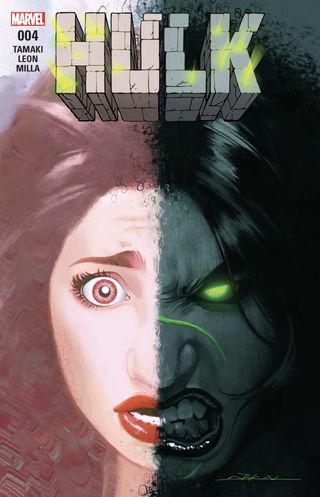
In the story Avengers: The Search for She-Hulk, she becomes totally unable to control her abilities, leading her to revert to her human Jennifer Walters form and go on the run, a la her cousin Bruce's classic status quo. This story established that in her most brutal, hulked-out form, Jennifer's transformation is driven by anxiety - while her power to control and manage her transformation comes from her self-confidence and personal willpower as Jennifer Walters.
She also has a grey She-Hulk persona, who is stronger and more savage than the classic She-Hulk, and who sometimes changes at night, much like Banner's Joe Fixit alter ego.
The gray She-Hulk persona took the lead following grave injuries Jennifer suffered at the hands of Thanos, who was tough enough to maim her even while powered up. She underwent a long journey in her own Hulk title from writer Mariko Tamaki, which led her to confront the nature of her transformation, resulting in a stronger, less articulate, more smash-y She-Hulk.
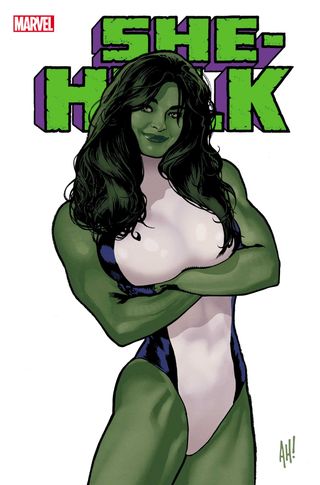
She got another transformation (sort of) in 2021's Avengers #47, part of the ongoing 'World War She-Hulk' story arc in which she's captured by Russia's the Red Room, who tried to turn her into their own 'Winter Hulk' operative, Bucky Barnes/Winter Soldier style.
But it turns out Jennifer was wise to the plan all along and allowed herself to be captured and her transformation was a ruse as part of an undercover mission to stop a massive Gamma bomb from being detonated.
In the end, the bomb does go off, but She-Hulk is able to use her enhanced physiology from the Red Room to absorb the entirety of the blast's radiation, using the scientific equipment at Avengers Mountain to safely dissipate the excess Gamma from her body, neutralizing the threat.
This leads to Jennifer Walters returning to her more traditional, less muscular, more intelligent She-Hulk form and resuming her legal career in her current ongoing title, in which she's been reunited with her formerly deceased Avengers teammate Jack of Hearts, and joined her longtime rival Titania in starting up their very own superhero fight club.
She-Hulk in the MCU
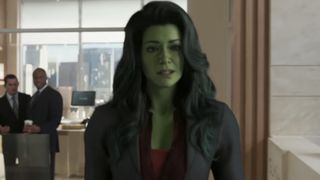
Tatiana Maslany's She-Hulk is now five episodes in, with an overarching plot budding in the show, but still not coming to the forefront. Still, the ongoing references to 2008's Incredible Hulk raise the question of whether Tim Blake Nelson's Leader could appear in the show before he returns as the big villain of the film Captain America: New World Order.

Sterns was last seen with Gamma blood dripping onto his face, presaging his likely transformation into his comic book identity of the Leader, Hulk's greatest nemesis.
The Incredible Hulk was the second MCU film following Iron Man, with both released in '08 - but in all that time, the setup for the introduction of the Leader has never been paid off, perhaps in part because of issues between Universal Studios and Marvel Studios over the rights to make another standalone Hulk movie.
Could She-Hulk take up the torch of Hulk's MCU legacy in terms of his established storylines, such as the Leader, as well as being his successor as the MCU's resident Gamma-powered mainstay? With Jennifer Walters getting her She-Hulk powers through a Gamma-blood transfusion, and Bruce Banner destroying the samples of her irradiated blood to prevent them from getting stolen in episode 1, that could open the door directly to reference the last time we saw someone exposed to Gamma-blood in the MCU.
The Leader's return is now confirmed - but will he make a splash in She-Hulk first?
Then there's her obvious connection to future MCU stars the Fantastic Four. Though it would be a stretch to imagine her immediately replacing someone on the team, it's not out of the question that she'd wind up appearing alongside them sooner or later.
And not for nothing, but if Marvel Studios really wants to throw us a curveball and completely separate their own Fantastic Four from the previous, failed movie versions, instantly replacing a core member with She-Hulk would certainly be an effective, if controversial, way to do it.
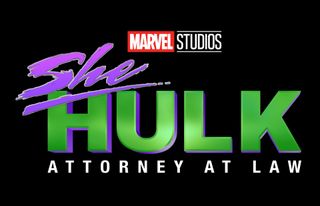
And of course there's the matter of her connections to the Time Variance Authority as an attorney.
There'll be a second season of Loki on Disney Plus and Kang, who was seen in statue form in the final moments of Loki season 1 will be the main villain in 2023's Ant-Man and the Wasp: Quantumania, so the TVA might continue to be an MCU presence, and She-Hulk's history with them something to watch.
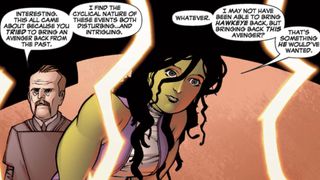
But that's likely something to keep in mind for another, later time. For now, one thing that's not in question is that She-Hulk's presence in the MCU is sure to make waves continued, both among fans, and in the overall story of the Marvel Cinematic Universe.
She-Hulk is a spin-off of the original Hulk, Bruce Banner - but he's got plenty of variant personalities all his own. Learn all about the Hulk and his most iconic personas.
I've been Newsarama's resident Marvel Comics expert and general comic book historian since 2011. I've also been the on-site reporter at most major comic conventions such as Comic-Con International: San Diego, New York Comic Con, and C2E2. Outside of comic journalism, I am the artist of many weird pictures, and the guitarist of many heavy riffs. (They/Them)

